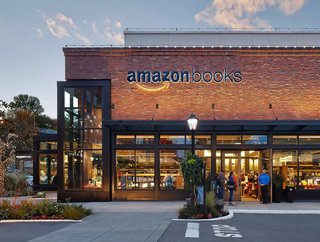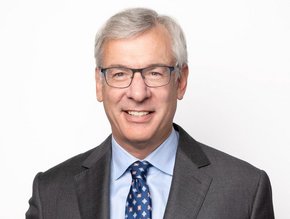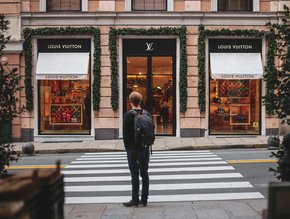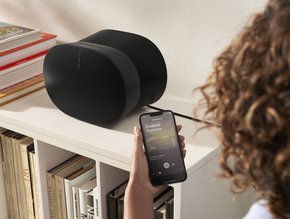Top 10 most expensive company acquisitions by Amazon

Amazon’s announcement a few days back that it had agreed to buy MGM Studios for US$8.bn marks not only the e-commerce giant’s second most expensive acquisition (after Whole Foods Market), but its 106th acquisition 23 years after its first-ever acquisition in 1998 of UK-based internet book seller Bookpages.
Amazon, which was founded in 1994 by Jeff Bezos as an online bookstore and has grown exponentially in the last two decades, made its first three acquisitions in 1998 before ramping up its acquisition portfolio from 2005 onwards with the purchase of several companies every year. While the e-commerce giant focused at first on acquiring digital retailers and media websites, from 2011 onwards, it shifted its focus to buying tech startups to help improve its Amazon Echo and grow its AWS business nut.
Here, we highlight Amazon’s top 10 most expensive acquisitions, ranked by size of purchase.
10: Annapurna Labs – US$350m
The deal In January 2015, Amazon acquired Israeli semiconductor development firm Annapurna Labs for US$350m as part of Amazon’s plans to develop chips for Amazon Web Services.
About Annapurna Labs Founded in Israel by Avigdor Willenz, founder of the chip-design company Galileo Technologies, which was bought by Marvell in 2001 for almost US$3bn. It was in stealth mode since 2011 so little was/is known about the company, but it develops networking chips and designs to make data centers run efficiently.
Amazon announced in late 2020 that the Israeli team holds a major role in Amazon’s strategic move into self-made processors and hardware infrastructures and for Amazon to develop some of its own chips. and that the team are creating Graviton processors to replace the Intel and AMD chips in Amazon’s AWS (Amazon Web Services) cloud.
09: Souq.com – US$580m
The deal In July 2017, Amazon acquired Middle East online retailer Souq.com in an all-cash deal for US580m giving the retail giant a firm footing in the growing Middle East e-commerce space and the ability to leverage each site’s respective scale.
About Souq.com Founded in 2005 in Dubai by Ronaldo Mouchawar, Souq.com was originally a consumer to consumer auction site, part of the Maktoob Group, and it was five years later in 2010 when Sam Daoud joined from eBay as CTO that led to the transformation of the business from auctions to a fixed price catalogue-based business similar to Amazon.com. Souq.com had its first major funding round in 2012 led by Tiger Global Management and continued to raise funds becoming the first internet-based business in the Middle East to raise so many funds.
Two years after buying the Dubai-based Souq.com, in 2019, Amazon rebranded the Middle East marketplace to Amazon.ae, except in Saudi Arabia and Egypt, and then in 2020, Souq.com KSA became Amazon.sa, though the Egyptian site continues to operate as Souq.com.
Mouchawar is now Amazon MENA’s Vice President looking after Amazon in the Middle East across all sites and since the start of the pandemic, Amazon in the Middle East has increased its workforce by 30% to meet the surge in e-commerce demand. As the largest e-commerce platform in the Arab world, Amazon.ae sells over 30 million products and allows shoppers to shop in Arabic.
08: PillPack – US$800m
The deal In June 2018, Amazon acquired online pharmacy startup PillPack for US$800m in a move to get in on the prescription drug market and compete with drugstore chains, drug distributors and pharmacy benefit managers. PillPack remains independently operated as a subsidiary of Amazon and retains its original founder and CEO.
About PillPack Founded in 2013 by TJ Parker (CEO), a pharmacist turned entrepreneur, and engineer Elliot Cohen (chief product officer), who met through MIT’s Hacking Medicine program, PillPack was set up in a bid to prove that managing medications could be simple and make it easier for people to buy prescription drugs online and manage their medications. Challenging traditional retail pharmacies, PillPack’s mission was focused on helping the 1 in 10 people who take more than five prescription medications a day to manage their medications.
A full-service pharmacy, PillPack built a system hat automatically manages refills and works with insurers on behalf of customers as well as sorting pills and providing dispensers to make everything as easy as possible for users. It uses PharmacyOS, a software platform created entirely in-house, to help manage each customer’s medications, coordinate refills and renewals, and make sure each shipment is sent on time. It also enables real-time notifications and an online dashboard so customers Amazon has since rolled out Amazon Pharmacy and recently unveiled its prescription drug price comparison tools. can control their shipments, refills and copays.
07: Kiva Systems – US$800m
The deal In March 2012, Amazon acquired robotics company Kiva Systems in an all-cash deal for US$800m giving the e-commerce giant ownership over a new breed of mobile robots that could carry shelves of products from worker to worker, reading barcodes on the ground for directions along the way.
About Kiva Systems Founded in 2003 as Disrobot Systems in California by MIT engineering graduate Mick Mountz, the intention was to reinvent the centuries-old warehouse business by using mobile robots to manage inventory. The company, which changed its name to Kiva Systems, was soon joined by engineering professor Raffaello D’Andrea, and former professor of computer science Peter Wurman, and moved East to Massachusetts in order to find venture backers, which it did.
Since 2004, Kiva has amassed US$18m in funding from Bain Capital and other investors and signed up heavyweight customers including office supply giant Staples and drugstore chain Walgreens. The company is largely responsible for creating today’s logistics robotics market, and inventing a solution for fulfilment, and gave Amazon the technical foundation on which it could build new versions of warehouse robotics. Following the acquisition, Amazon took Kiva Systems’ machines off the market and build and used all the robots it made. Amazon further established its Amazon Robotics unit and now uses more than 200,000 robotics in its delivery and fulfilment centres.
06: Ring – US$800m
The deal In February 2018, Amazon acquired home security startup Ring in a deal worth US$800m, giving Amazon a leg up on smart home tech and the internet of things, complementing its current in-home delivery service, Amazon Key, as it would provide Amazon with a new outlet for its own voice assistant Alexa.
About Ring Founded in a garage in 2013 as Doorbot, a wifi-enabled smart video doorbell, by serial entrepreneur Jamie Siminoff, the company was re-branded to Ring by Siminoff following his appearance with the product on US business reality TV series Shark Tank the same year. In less than a year following the announcement of the product, Ring had produced 20 thousands units and delivered them to buyers in 85 countries.
By the time it was acquired by Amazon five years later, it was the biggest company to have appeared on the show despite not getting any backers from the show. The main product is a ‘smart’ doorbell with camera and wifi connection, which sends a message tot eh user’s smartphone, tablet or PC every time someone rings the bell or gets close to the doorbell’s motion sensors allowing homeowners to communicate with a visitor in real-time. It also functions as a surveillance camera and automatically starts recording during a call.
Since the acquisition, Ring has become a major player in consumer video doorbells, security cameras and privacy protection with Amazon promoting its devices heavily on its e-commerce websites. Ring’s Neighbors app, which allows people to share information about the area’s security, has however attracted much controversy with its ‘Big Brother’ surveillance approach. Ring also has partnerships with local police departments in its numerous cities allowing neighbors to be included in crime monitoring processes.
05: Twitch Interactive – US$1bn
The deal In August 2014, Amazon acquired video-game streaming service Twitch for US$1bn in an all-cash deal marking one of Amazon’s biggest acquisitions at that point. This acquisition of Twitch by Amazon followed Google pulling out of a deal to buy it over anti-trust concerns. , with the aim of helping Amazon challenge other streaming video sites like YouTube and Netflix.
About Twitch Interactive Founded in 2011 as Twitch.tv, an offshoot to parent company Justin.tv, which was founded by Justin Kan and Emmett Shear and has since closed, Twitch (renamed Twitch Interactive in 2014) taps into the global phenomenon of broadcasting and watching gameplay focusing exclusively on live video for gamers. It allows users to host live streams of their gaming sessions and broadcasts them to the world for others to watch with its services built into gaming platforms such as Sony’s PlayStation 4 and Microsoft’s Xbox One.
Twitch raised more than US$34m in investment from firms before the acquisition and has since become the largest streaming platform for gaming content, today hosting 91% of all video game streaming and is the world’s most popular e-sports streaming service. With a market share of 76% in Europe and America, Twitch has serves more than 2m viewers at any given time of any given day and has more than 11,000 official streaming partners. The platform reached 22 million installs worldwide in the first quarter of 2021, up 62% compared with the previous year and while the US is its largest market, there was considerable growth in India.
04: Zoox – US$1.2bn
The deal In June 2020, Amazon acquired self-driving startup Zoox for US$1.2bn with Zoox continuing to exist as a standalone business and CEO Aicha Evans and CTO and co-founder Jesse Levinson continuing as CEO and CTO, respectively. Amazon acquired Zoox to help the startup bring its vision of autonomous ride-hailing to reality, but clearly with a view of utilising this its own logistics operations for package delivery. Amazon has been working on its own autonomous vehicle technology projects, including last-mile delivery robots and drone delivery, and previously invested in autonomous driving startup Aurora.
About Zoox Founded in 2014, in California by CTO Jesse Levinson (son of Apple chairman Arthur D. Levinson) and former CEO Tim Kentley-Klay, robotaxi startup Zoox saw the departure of Kentley-Klay in 2009, following which the startup hired a new CEO, Intel’s former chief strategy officer Aicha Evans, who was responsible for leading Intel’s transition from a PC-centric business to a data-centric one. Levinson and Evans continue to lead Zoox today as a standalone business following its acquisition by Amazon. The acquisition by Amazon will help Zoox, which was forced to lay off staff during the pandemic, accelerate its plans.
Zoox has a vision for the future of urban mobility – where passengers would use an app to hail a vehicle as with Uber but there would be no human operating the vehicle –focused on developing autonomous driving technology, including vehicles, for the purposes of offering a full-stack solution for ride-hailing. According to CEO Aicha Evans, at Zoox, “we are transforming the rider experience to provide superior mobility-as-a-service for cities”. At end of 2018, Zoox participated in California’s Autonomous Vehicle Passenger Service pilot.
The vehicle, powered by software and AI, and fully electric, will be bidirectional, operating the same in both directions, with an automated turning system, fitting up to four people with sliding doors on both sides, and powering up to 75mph. The commercial launch is expected this year.
03: Zappos – US$1.2bn
The deal In July 2009, Amazon acquired shoe e-commerce platform Zappos in an all-stock transaction worth US$1.2bn with the agreement that Zappos would continue to operate independently. Jeff Bezoz made several attempts to buy Zappos, first in 2005 pre-profitability, and again in 2009, when Bezoz agreed he was willing to allow Zappos to operate independently. The deal was struck and Zappos continues to run as an independent unit within Amazon with the board consisting both of Amazon and Zappos employees.
About Zappos Following its launch in 1999, online shoe retailer Zappos (derived from Zapatos, Spanish word for shoes) secured early investors including Tony Hsieh, who quickly became the company’s CEO and continued right up until his retirement in 2020. The online platform, which began solely in shoes and extended to apparel, was not profitable for the first eight years, but secured funding from Sequoia Capital in 2004, and moved its headquarters moved from San Francisco to Las Vegas the same year.
Zappos was highly regarded for its company culture, one of the reasons Amazon wanted in, and was known for being good to its employees long before it was fashionable, following a corporate philosophy based on the science of happiness, which it used to serve both its customers and employees better. A happy and positive corporate culture was a big deal for Hsieh who wrote a bestselling book in 2010, ‘Delivering Happiness: A Path to Profits, Passion, and Purpose’. Under his leadership, Zappos paid 100% of its employees’ healthcare premiums, spent big on personal development, and paid new employees US$2,000 to quit if they were unhappy with their jobs. In fact, Zappos was in Forbes’ top 20 American companies to work for three consecutive years (2010, 2011, 2012). Hsieh continued on as Zappos CEO until August 2020 when he retired and COO Kedar Deshpande took the reins. Tragically, Hsieh passed away in November the same year.
02: MGM – US$8.5bn
The deal In May 2021, Amazon announced it had agreed to buy Hollywood film studios MGM Studios for US$8.45bn. This deal comes as Amazon aims to become a more prominent player in the entertainment world, complementing Amazon Studios, and giving Amazon’s Prime Video streaming service access to a massive catalogue of content including some of the most iconic movies ever made. MGM will continue operating as a label under the Amazon brand.
About MGM Studios Founded in 1924 and recognised by its roaring Leo the Lion logo, Metro-Goldwyn-Mayer (MGM) is one of the world’s oldest film studios. It was formed when entertainment entrepreneur Marcus Loew gained control of Metro Pictures, Goldwyn Pictures and Louis B Mayer Pictures and grew to become one of the Big Five film studios in Hollywood, and became known as the studio that produced numerous big musicals and won many Oscars. A complete production house, from studios and backlots to full technical facilities, its most lucrative years were from 1926-1959. In the 60s, MGM fell under the control of outsiders with little experience in film-making, with assets sold off and output reduced, and a focus instead on the franchise with the launch of MGM Resorts International. From the early 70s onwards, the studio was bought and sold multiple times with increasing assets sold off before finally filing for bankruptcy in 2010, emerging from this under the ownership of its creditors. MGM Holdings, the parent company of MGM Studios, had been exploring a sale since last year
MGM’s huge value is in its library of 4,000 films and 17,000 TV shows, including classics like Rocky, Ben Hur, The Pink Panther, Some Like It Hot, The Wizard of Oz, and The Silence of the Lambs and TV series like the Handmaid’s Tale, Fargo and Vikings. MGM productions collectively have won more than 180 Oscars and 100 Emmys. It’s likely such films and others will become part of Amazon’s Prime Video subscription service, which recently surpassed 200 million subscribers. But the real value for Amazon is the intellectual property in the MGM properties such as Rocky and The Pink Panther, which Amazon Studios could use to create new originals.
01: Whole Foods – US$13.7bn
The deal In June 2017, Amazon took a leap into traditional retailing with the acquisition of organic food chain Whole Foods Market in an all-cash deal for US$13.7bn making it Amazon’s biggest subsidiary. The aim for Amazon was to understand the grocery business to convert grocery customers to online and shift sales online.
About Whole Foods Market Whole Foods began life in 1978 as a solo natural foods store, Safer Way Natural Foods, in Austin, Texas. Founded by CEO and co-founder John Mackey, it merged with another local natural food store, Clarksville Natural Grocery in 1980 to open the first Whole Foods Market. Much of the company’s growth was through mergers and acquisitions, with Mackey often moving into new markets by buying a local chain and converting it into a Whole Foods. By 1984, it had expanded beyond Austin, to Houston, and had 600 employees, and opened its first store outside Texas (in New Orleans) by 1988.
By the time the company went public in 1992, it had 12 stores across Texas, California, North Carolina and Louisiana, and by 1997, it had 70 stores across 16 states and had exceeded the US$1bn annual revenue. The retailer expanded internationally in 2002, opening a store in Toronto, Canada, and then a store in London, UK, in 2007. It now has seven stores in London and more than 500 across the US. Following the purchase by Amazon, Whole Foods’ prices were cut, Amazon fully integrated its Prime membership program into stores, and rolled out pickup and delivery services through Prime Now, and closed many of its UK stores with just seven left in London. While many stores still exist, due to the fact that a lot of Whole Food sales has been converted to online, the stores have increasingly become e-commerce fulfilment centres.






